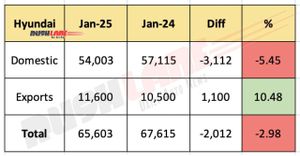Rising rice prices are hitting Japan as demand continues to surpass supply, with forecasts for 2024 indicating significant increases due to multiple contributing factors. The relative transaction price for rice is projected to average around ¥23,388 through November, almost 1.5 times higher than the previous year's price of ¥15,315.
According to the Ministry of Agriculture, Forestry and Fisheries, the long-term trends of staple rice prices have shown concerning increases, with the relative transaction price used by agricultural cooperatives to set wholesale price contracts reflecting these trends.
Drilling down, various factors have prompted this surge. The primary reasons are attributed to both supply constraints and soaring production costs. Recent analysis suggests the harvest quality has suffered due to extreme weather conditions, including heatwaves experienced last year. This situation has led to reduced rice output, creating upward pressure on prices as consumption remains high, particularly influenced by trends within the restaurant sector and food tourism.
Data from the Ministry of Internal Affairs and Communications aligns with this narrative, noting consumer prices for rice skyrocketed by 63.6% on average as of November 2024 compared to the previous year.
Reflecting on these stark statistics, it is evident the demand-side pressures have changed dramatically. Increased external consumption—the result of the booming restaurant industry and rising inbound tourism—has exacerbated the difficulties for producers trying to meet these heightened demands. With supply unable to keep pace with this demand, the price naturally climbs.
Another significant factor driving rice prices higher involves global economic trends. Inflation has affected various agricultural inputs, particularly fertilizer costs, which have surged since 2022. Likewise, the costs associated with fuel for agricultural machinery have also increased, tightening the profit margins for rice farmers. These cumulative cost increases directly impact the price consumers pay at the store, making the challenge complex and multifaceted.
Analysts predict this trend may persist well beyond 2024. Factors influencing both domestic and international agricultural markets continue to evolve, with climate change posing potential threats to future harvests. Such unpredictability creates significant barriers for policymakers and local farmers alike as they confront the challenges of sustainable production methods under changing environmental conditions.
The rice sector's resilience has historically been tested during economic upheavals, and these new challenges present another hurdle. With rice being not just a staple food but also integral to Japanese culture, the social ramifications of price increases could resonate widely. High rice prices may push consumers to seek cheaper alternatives, impacting traditional diets and agricultural practices.
Still, some see opportunities arising from these challenges. Initiatives aimed at increasing domestic rice production through advanced agricultural strategies and investing in biotechnology could help narrow the supply-demand gap over the long run. Government incentives to encourage sustainable farming practices have been discussed within agricultural policy circles, but concrete steps remain under deliberation.
The public's perception of rice prices, their willingness to adapt to market changes, and lifestyle shifts could shape the broader agricultural strategy moving forward. The stakes are high, as failing to align agricultural practices with consumer expectations might lead to not just economic distress among farmers but also cultural shifts as staples evolve.
Meanwhile, as 2024 progresses, consumers will likely be keeping a close eye on the market, facing increased prices at the checkout. Local markets, grocery chains, and restaurants are expected to adapt to the rising costs, either through price adjustments or by sourcing alternative staples to keep menus affordable.
These dynamics of rising rice prices plant seeds of uncertainty and challenges for the future of food security. Decisions made during this period could have significant repercussions on various living standards across Japan, maintaining rice's status as both sustenance and cultural heritage.



